Dr. Phil Zeltzman’s Blog
5 reasons to spay your pet (Part 1)
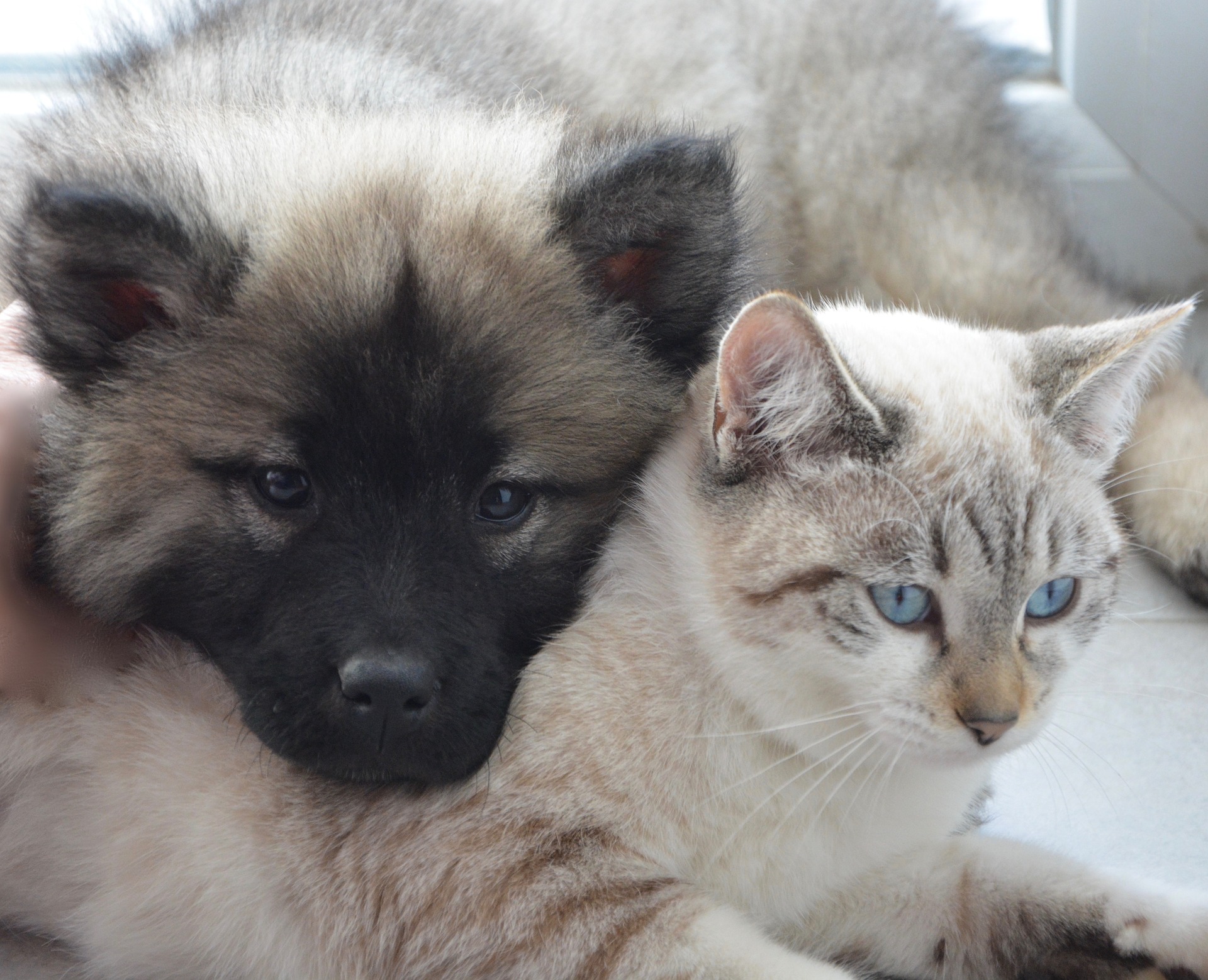
Non-spayed cats and dogs are at a higher risk of developing multiple conditions. Here are 5 reasons to spay your pet:
1. Breast tumors
Over 25% of non-spayed female dogs will develop breast or mammary tumors!
In dogs, approximately 50% of mammary tumors are benign and 50% are cancerous.
In cats, 90% of mammary tumors are cancerous, so spaying is even more important.
2. Ovarian diseases
Sure, diseases of the ovary, such as tumors, are rare. But a real good way of eliminating that risk is spaying.
3. Tumors of the uterus
Likewise, tumors of the uterus are not common, but spaying eliminates this risk.
Along with a higher risk for tumor development, there are other unfortunate complications that can arise when pets aren’t spayed.
4. Heat cycles
As a general rule, most females have their first heat cycle around 6 months of age, which is why we often recommend spaying before that age. A heat cycle causes mood swings, swollen nipples, attraction of males, a swollen vulva and a bloody discharge. It can be quite stressful for everybody involved – including you!
5. Unplanned pregnancies
Letting a non-spayed cat or dog roam is similar to gambling. Chances are, your little female friend will meet Mr. Not-Right.
Now… not only do you have to deal with the pregnancy, but in 2 months, you will need to make sure that the delivery goes well. And hope your pet won’t need an emergency C-section.
Then you will have to take care of the 1, 2, 3… or 10 babies or find them new homes. If mom can’t nurse, guess who needs to get up every 2 hours to bottle-feed the babies?
Multiply that by 10 or 100 or 1,000 pets, and you start to understand the complex problem of pet overpopulation. This leads to millions of abandoned or euthanized pets.
So please do the right thing: spay your cat or your dog.
Next time, we will go over 5 more reasons to spay your pet.
Phil Zeltzman, DVM, DACVS, CVJ, Fear Free Certified

Dr. Phil Zeltzman is a traveling veterinary surgeon in Pennsylvania & New Jersey. An award-winning author, he loves to share his adventures in practice along with information about vet medicine and surgery that can really help your pets. Dr. Zeltzman specializes in orthopedic, neurologic, cancer, and soft tissue surgeries for dogs, cats, and small exotics. By working with local family vets, he offers the best surgical care, safest anesthesia, and utmost pain management to all his patients. Sign up to get an email when he updates his blog, and follow him on Facebook, too!
5 Things I Wish Every Cat Owner Would Know (part 2)
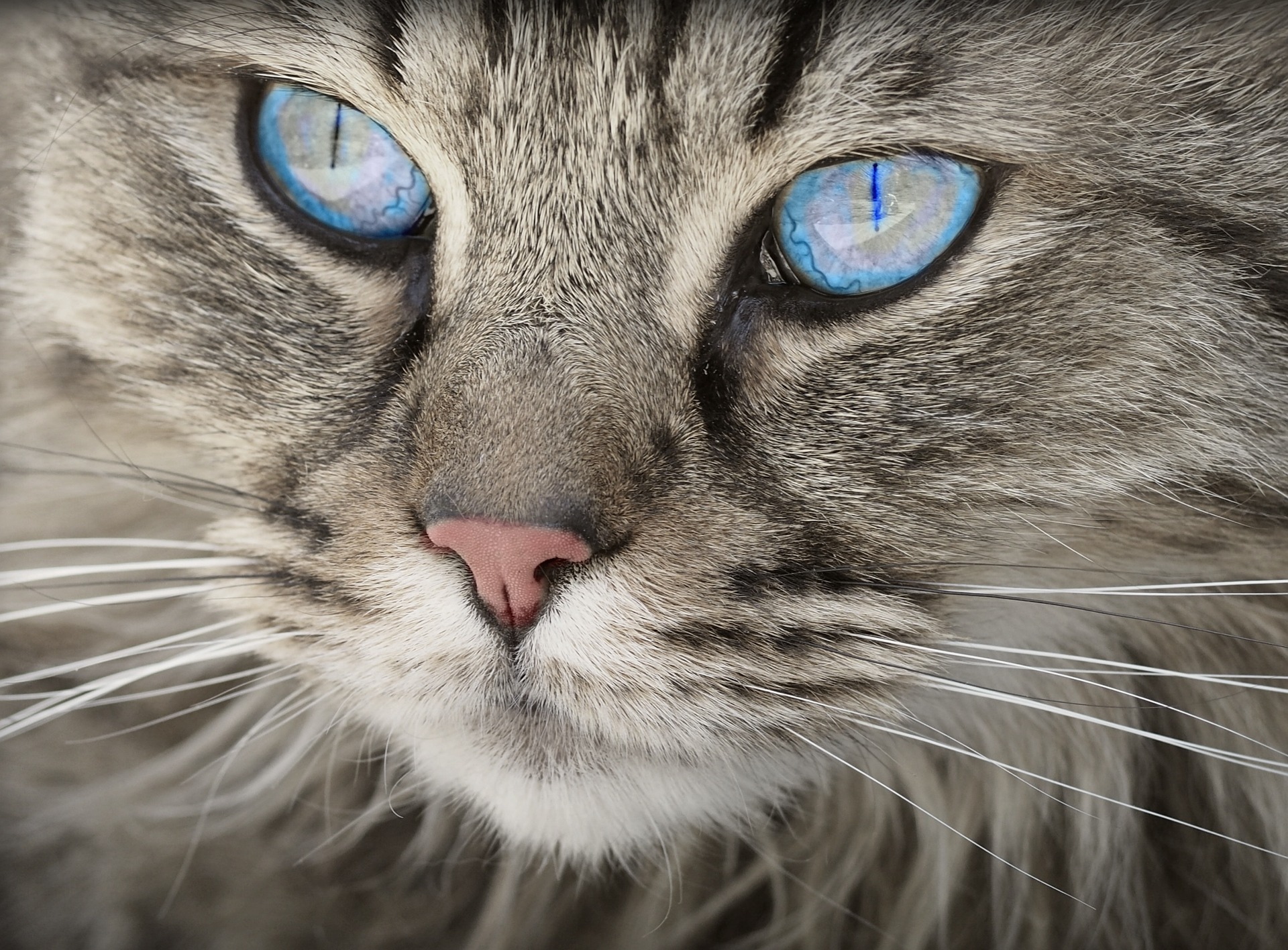
As promised last time ( ), here are another 5 topics you should be aware of and pay attention to when caring for your cat(s).
6. Follow discharge instructions
Discharge instructions are made to be followed. This is one of those times where you get to learn from someone else’s challenges. That can save you and your cat from some serious trouble.
We know that wearing a plastic cone for 2 weeks is no fun. We know that being stuck in a crate for 4 to 8 weeks is boring. If there were an easier way to do things, we would tell you!
So please follow discharge instructions – all of them – all the time.
7. Get pet insurance
Pet insurance can make all of the difference in your cat’s life. If you cannot afford thousands of dollars in emergency or medical care, please consider getting pet insurance. And do your homework, as there are some really bad companies and really good companies out there.
8. Know thy enemy
Anesthesia is not the enemy.
Surgery is not the enemy.
Your pet’s condition is the enemy.
We are here to help you choose the best weapon to fight the enemy.
9. Know that prevention is a critical part of pet medicine
Every year, countless cats die because they did not receive basic, effective, affordable preventive care. Yearly exams are crucial to ensure your cat is and remains healthy and happy. Vaccinations should always be kept up to date, even for indoor cats. You never know when one might escape, get lost, or get hospitalized.
That thought applies to heartworm, flea and tick prevention as well. Your cat may not go outside, but you or your other pets who do can bring parasites inside your home. And obviously mosquitoes, who can carry parasites, can fly inside your house and bite an indoor cat.
Keep your kitties protected.
10. Don’t inadvertently starve your cat
When you realize it’s time for your cat to lose weight, be sure to create a feeding plan with your veterinarian. So many make the mistake of unknowingly restricting cats too much by cutting the amount of food down significantly.
This is very dangerous in cats. It can lead to deadly liver complications called hepatic lipidosis. We would rather have you trust your family vet, and feed a diet that was made specifically for weight loss.
These 5 additional tips can truly make a big difference in your cat’s life.
Phil Zeltzman, DVM, DACVS, CVJ, Fear Free Certified

Dr. Phil Zeltzman is a traveling veterinary surgeon in Pennsylvania & New Jersey. An award-winning author, he loves to share his adventures in practice along with information about vet medicine and surgery that can really help your pets. Dr. Zeltzman specializes in orthopedic, neurologic, cancer, and soft tissue surgeries for dogs, cats, and small exotics. By working with local family vets, he offers the best surgical care, safest anesthesia, and utmost pain management to all his patients. Sign up to get an email when he updates his blog, and follow him on Facebook, too!
5 Things I Wish Every Cat Owner Would Know (part 1)
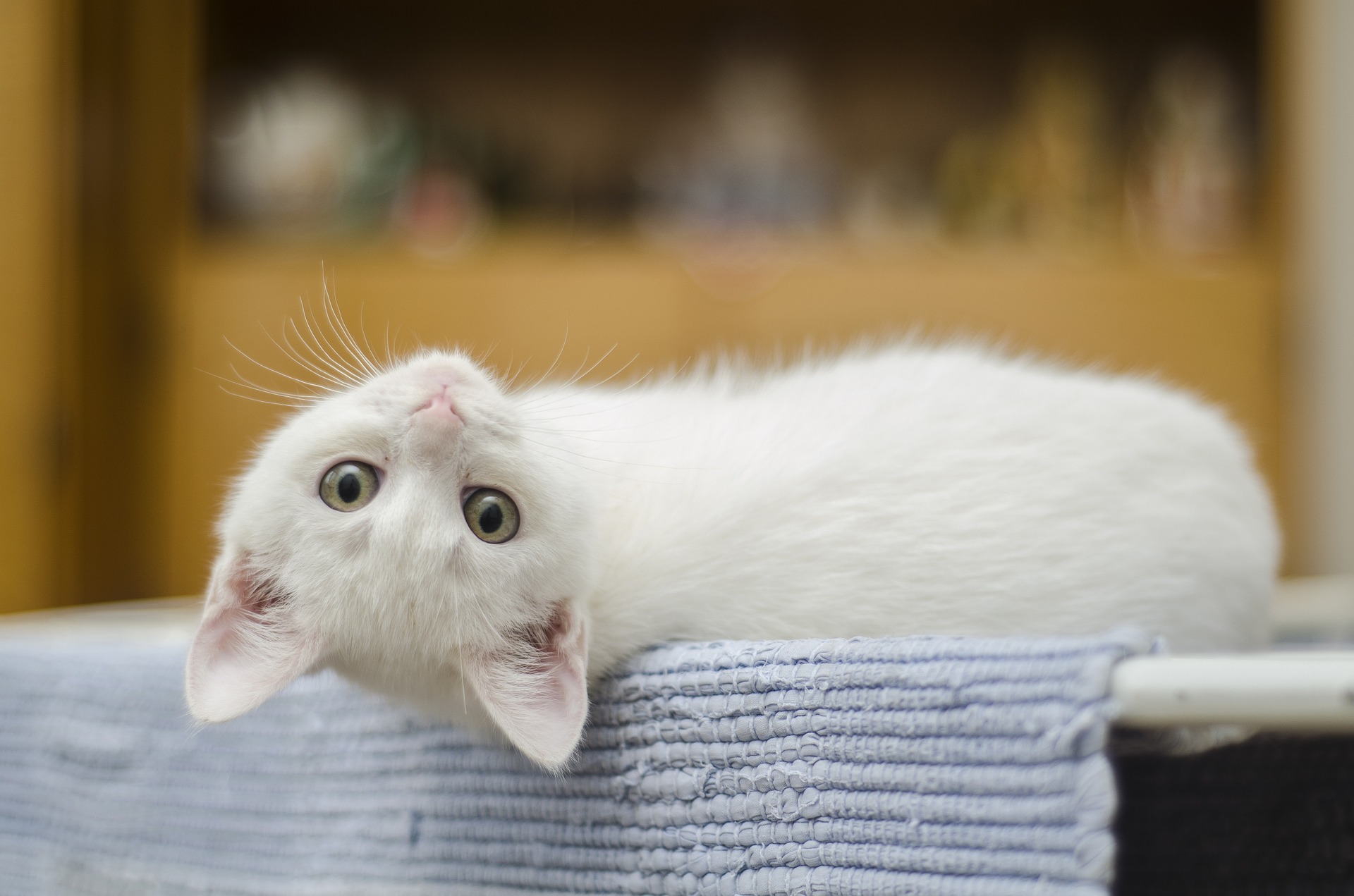
Most cat owners are prepared to do whatever it takes to help their cat. Sadly, too many also rely on misconceptions and erroneous advice that can be misleading at best, and dangerous at worst. Every cat owner should be aware of the following issues:
1. Recognize pain and suffering
Most cats are extraordinarily stoic. It can be extremely difficult, but it is very important to recognize when cats are suffering.
If they are limping, they hurt.
If they are vomiting, something is wrong.
If they skip one or several meals, there is a reason.
If they have difficulty breathing, they may, in fact, be suffocating, and it’s terrifying for them. Seek help immediately.
Procrastination is heartbreaking for us.
2. Denial about weight can be deadly
If you describe your cat with words such as “solid,” “big boned” or “fluffy,” chances are your cat is overweight or obese. We know they love their treats, and that you love giving them, but too much weight is not healthy. Free feeding (i.e., not measuring the daily amount of food) is a recipe for chubbiness.
It takes years off of feline lives, it makes anesthesia riskier, and it makes recovery from surgery more difficult. Love your cats in ways that make them healthy and happy: hugs, petting, playing, snuggling, brushing, and interaction are all calorie-free forms of love and attention your cat craves!
3. Know whom to trust
As the saying goes, “You are what you eat,” so choosing the correct pet food is a big deal. Please talk to your vet when picking food. Feeding the wrong food to your cat can lead to obesity, bladder stones, urinary blockage and a poor hair coat.
In addition, given the regular pet food recalls, choosing a reputable brand is very important. The composition of pet food should be based on scientific research, not slick marketing.
4. Never assume
We cannot examine or treat your cat over the phone. We sometimes need to run lab work to find out what is going on with your cat. Yes, that cost is going to be in addition to the exam fee, but these tests are best for the health of your cat.
These diagnostic tests are our “X-ray glasses” to understand your cat’s condition. Without them, we might be blind.
This is really no different than in human medicine.
5. Spay or neuter your cat
Spaying a female before the first heat cycle dramatically reduces the risk of breast cancer. Spaying also totally prevents pyometra, a deadly uterine infection.
Neutering prevents testicular cancer and spraying.
Beyond those medical reasons, spayed or neutered pets are less likely to run away and get hit by a car or get into a fight. They also have a lower incidence of behavior problems.
We will go over 5 more tips next time.
Phil Zeltzman, DVM, DACVS, CVJ, Fear Free Certified

Dr. Phil Zeltzman is a traveling veterinary surgeon in Pennsylvania & New Jersey. An award-winning author, he loves to share his adventures in practice along with information about vet medicine and surgery that can really help your pets. Dr. Zeltzman specializes in orthopedic, neurologic, cancer, and soft tissue surgeries for dogs, cats, and small exotics. By working with local family vets, he offers the best surgical care, safest anesthesia, and utmost pain management to all his patients. Sign up to get an email when he updates his blog, and follow him on Facebook, too!
3 costly mistakes made by pet lovers

I am very fortunate to work with motivated pet lovers when I perform surgery on their pets. Yet I am always surprised when they make the 3 following mistakes.
1. Allowing their pet to gain weight
Allowing your pet to be overweight increases their chances of getting certain diseases: diabetes, heart disease, urinary issues, tumors, orthopedic problems (such as ACL tears) and arthritis, to name a few.
It gets worse: obesity decreases your pets’ quality of life and shortens their lifespan.
Studies showed that maintaining a healthy weight can extend dogs’ lives for 2 years! The same concept likely applies to cats.
2. Giving your pet “freedom”
Every year, I fix a number of broken bones that could have been totally avoided. If more dogs were on a leash and fewer cats were allowed to go outside in the name of “freedom”, there would be much fewer broken bones.
Dogs and cats will never win the battle against a moving vehicle. The damage can be extensive, even life-threatening. Not using a leash may also increase the risk of your pet getting into a fight with unfriendly four-legged neighbors or even wildlife.
Use a leash – save a life (and money).
3. No pet insurance
Surprisingly, pet insurance is still a fairly new concept for some pet owners. Pet insurance can help with unforeseen emergencies or surgeries.
Similar to health insurance for humans, it will help offset some of the cost of pet ownership. It may give you much needed assistance in the event of an emergency or costly but necessary surgery.
Now… not all pet insurance companies are created equal. Some are good, some are really bad… So do your research to find the company and plan that’s right for you and your pet.
On that note, I’ve heard many pet owners say “I’ve paid for pet insurance for years, and I never used it, so I stopped paying for it.”
Ironically, we typically have this discussion when they need my surgical services (Murphy’s Law)… ie when it’s too late!
With all due respect, this is not the right way to think about pet insurance. Would you ever say “I’ve paid for fire insurance for years, and I never used it, so I stopped paying for it. Man, I wish my house had burned down so I could make my investment work for me!”
Of course you’d never say that!
It’s the same for pet insurance.
It’s not an investment.
When you buy pet insurance, you are buying peace of mind.
You are buying the certainty that if and when your pet needs surgery or some other treatment, you will be able to help your pet without putting your personal financial situation at risk (one big caveat: as with any insurance, there are exclusions!).
So consider getting pet insurance, have peace of mind, and hope you never need it.
Phil Zeltzman, DVM, DACVS, CVJ, Fear Free Certified

Dr. Phil Zeltzman is a traveling veterinary surgeon in Pennsylvania & New Jersey. An award-winning author, he loves to share his adventures in practice along with information about vet medicine and surgery that can really help your pets. Dr. Zeltzman specializes in orthopedic, neurologic, cancer, and soft tissue surgeries for dogs, cats, and small exotics. By working with local family vets, he offers the best surgical care, safest anesthesia, and utmost pain management to all his patients. Sign up to get an email when he updates his blog, and follow him on Facebook, too!
Major needs brain surgery!
Major, a cute 3 month old German shepherd, suffered severe injuries after he was attacked by a much bigger dog.
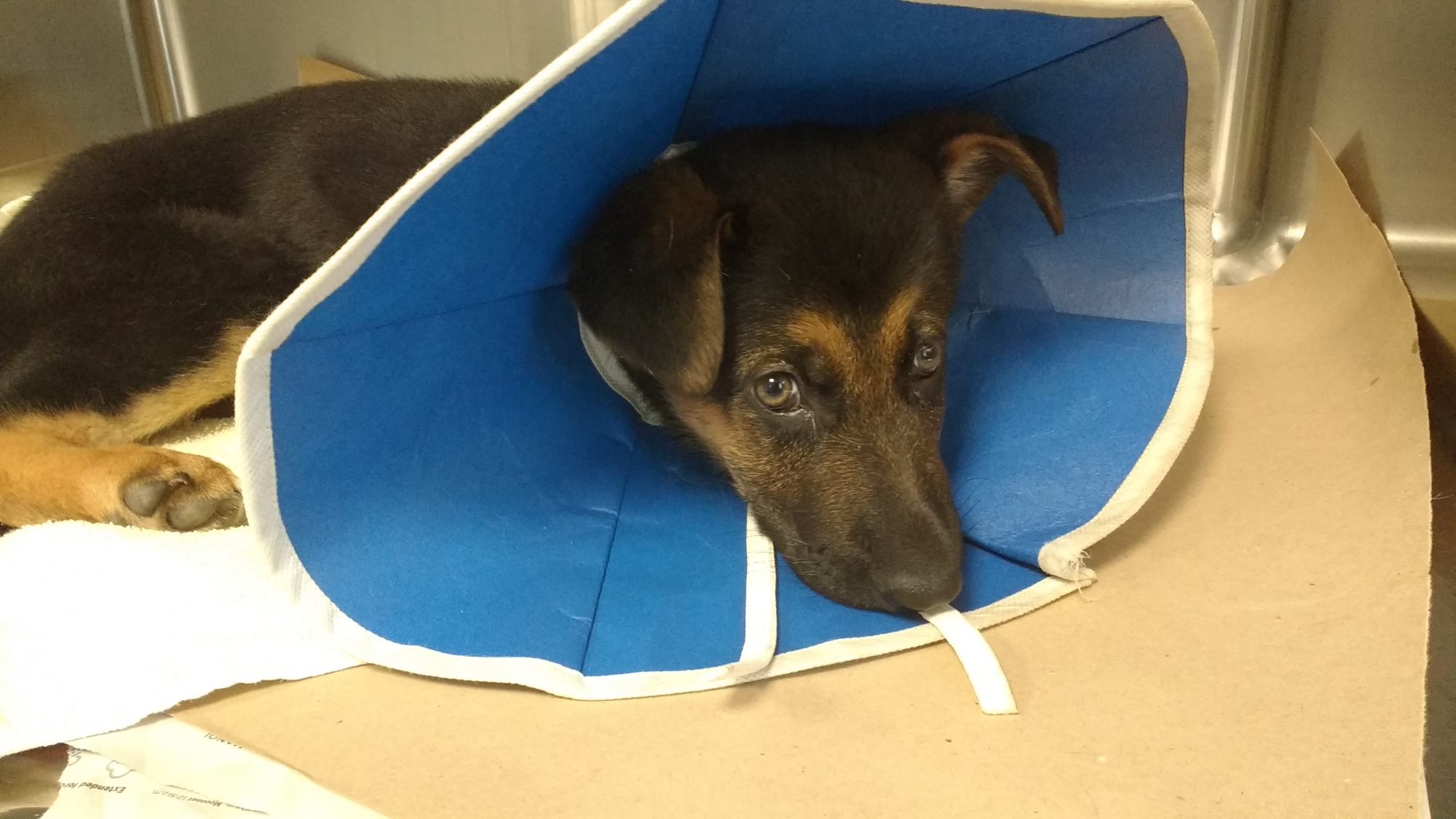
He was rushed to the local emergency clinic, where he was treated for his injuries. He had a large amount of swelling on the top of his head, which raised suspicion that he may have significant injuries to his skull.
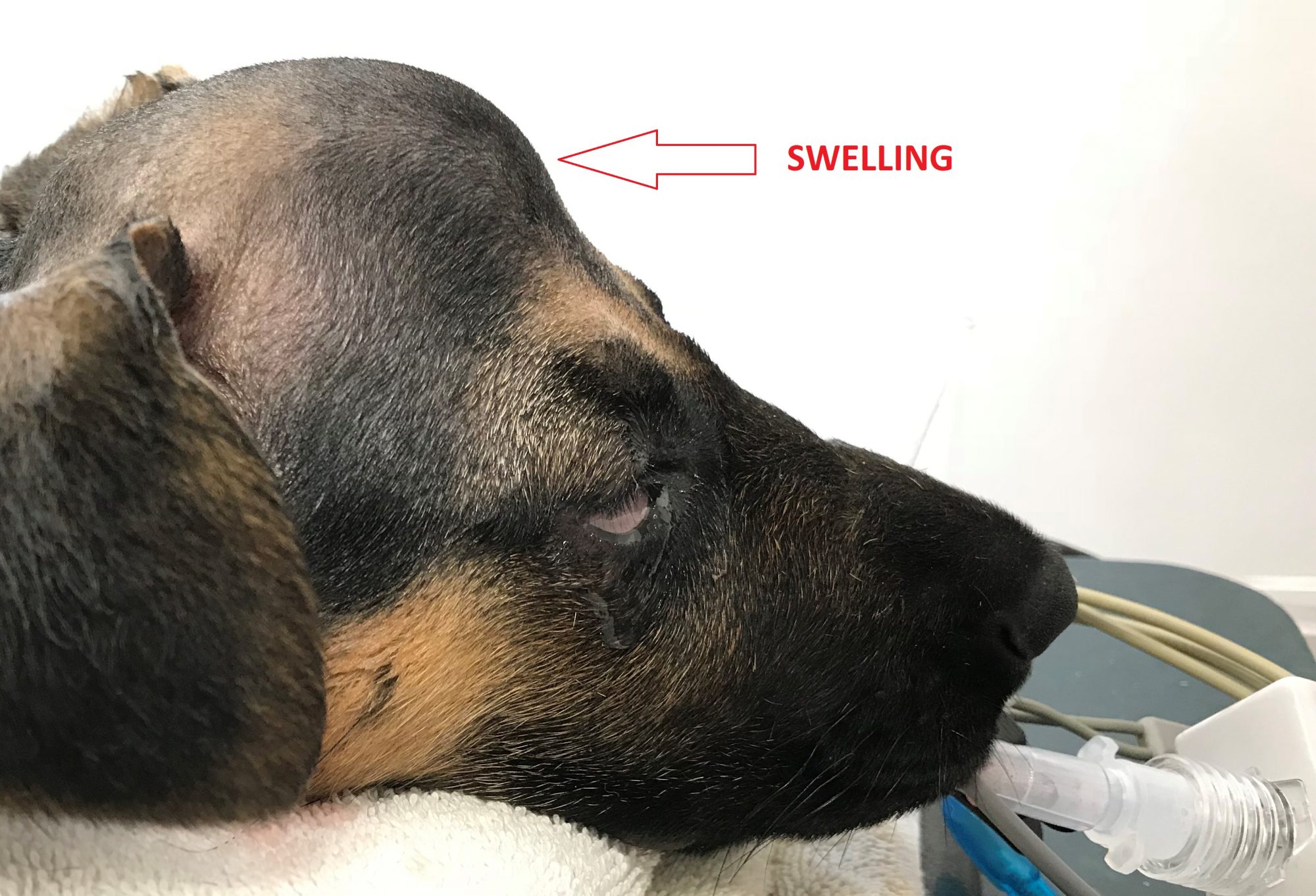
X-rays confirmed that Major had multiple fractures in his skull. He also seemed to be blind, so brain trauma was suspected.
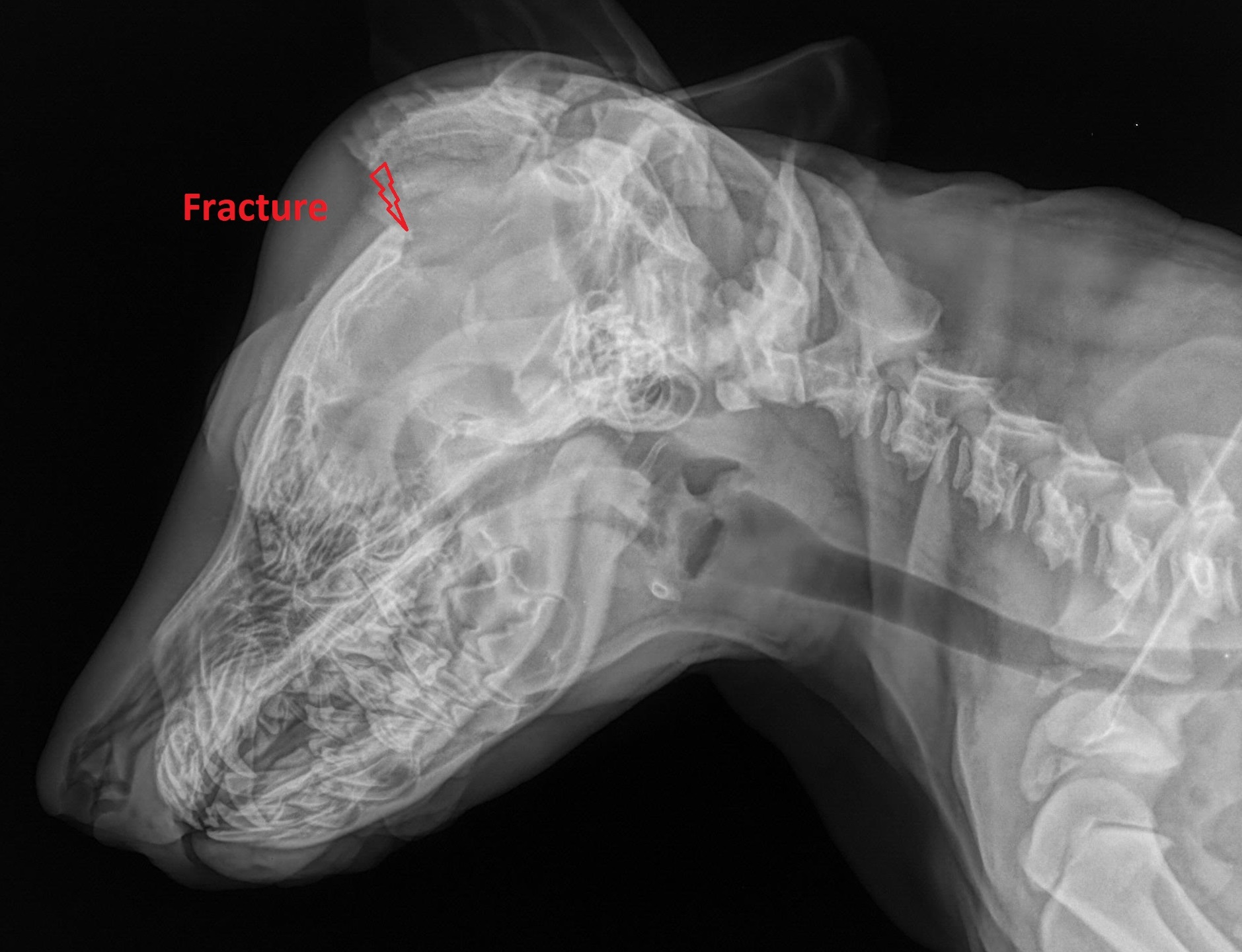
The emergency doctor called me to see if I would be willing to perform surgery to put this puppy back together. I told him that because of the amount of swelling and trauma, surgery would have to wait a few days for the swelling to decrease. I did not feel that I could successfully do surgery without causing additional injury with that much swelling.
A few days went by, Major was a much happier camper. It was unclear whether he could see, but he still reacted like a puppy when you walked up to his cage.
X-rays were repeated 5 days after the injury. They revealed that the swelling around the skull fracture had gone down, even though he still had a large lump on the top of his head. At that point, we decided to go ahead with surgery to repair the fracture.
Major was placed under general anesthesia and prepped for surgery. Anesthesia for brain surgery is risky. In order to decrease swelling of the brain itself, the anesthesia nurse had to keep his CO2 as low as reasonable throughout surgery.
After the skin incision, we confirmed that the massive swelling was a giant blood clot. I decided not to share those pictures… they are a bit too graphic…
After we cleaned out the giant blood clot, the fractures became visible. Of all the broken pieces, two main ones needed to be repaired. The tiny pieces had to be sacrificed.
With great care, in order not to damage the brain, holes were drilled in the skull and the fractured pieces. Suture (rather than metal wire) was used to secure the fragments in place. Over time, the suture material will be absorbed by the body.
WARNING – THE NEXT PICTURE IS GRAPHIC !!!
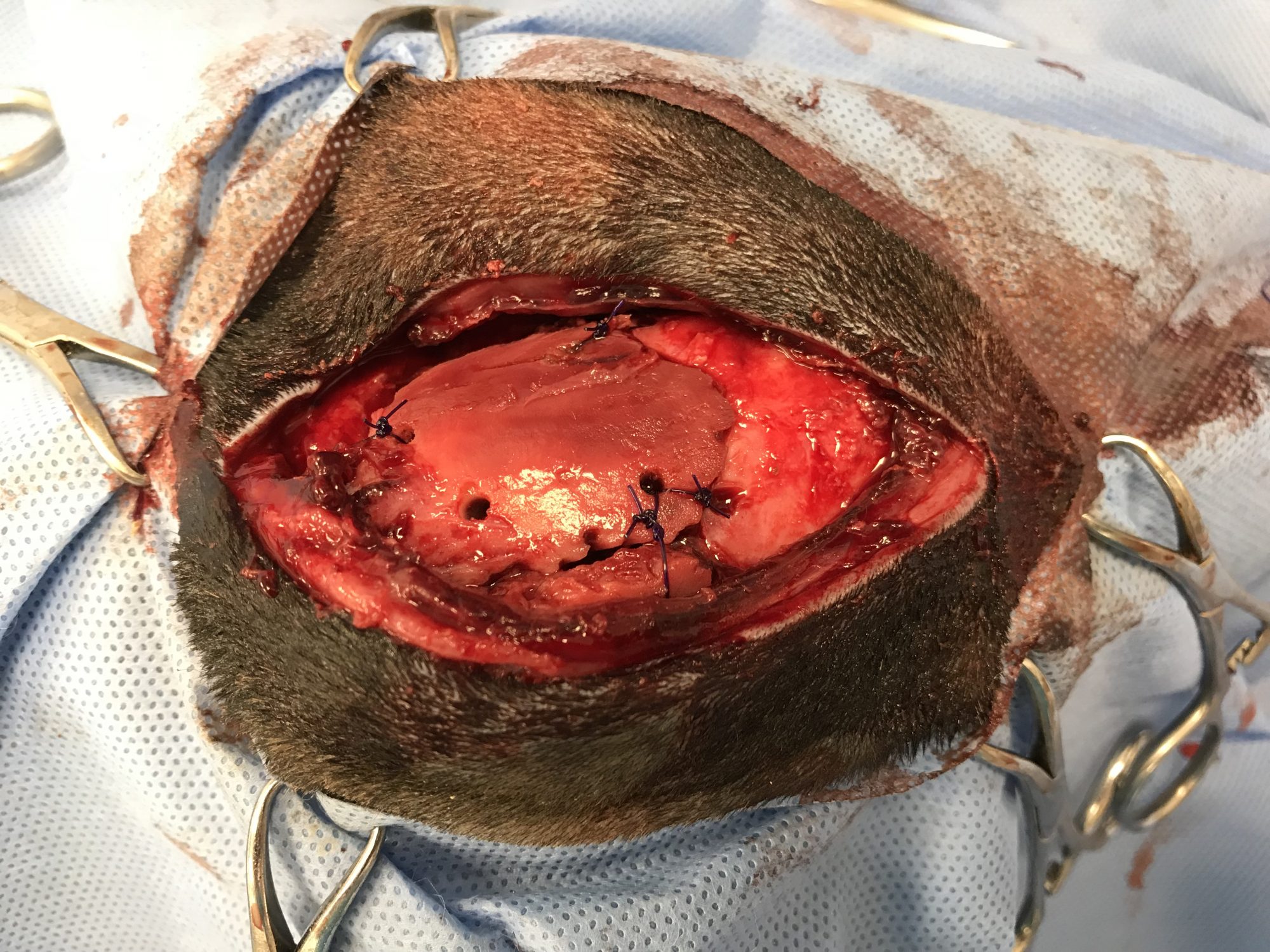
After surgery, the swelling was dramatically less (see the before and after pictures below).

Before Surgery
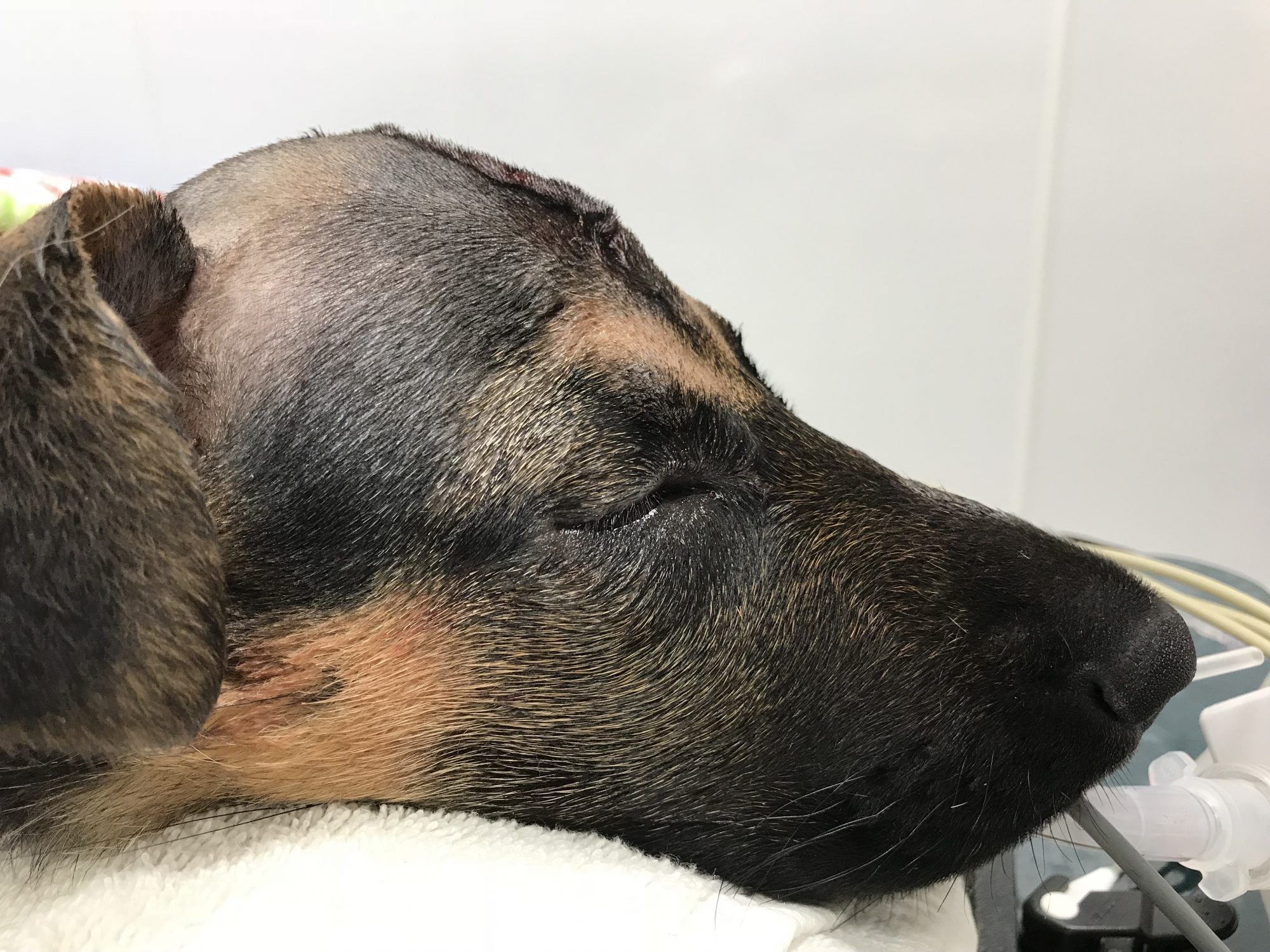
After Surgery
Major recovered smoothly after surgery, and surprisingly he was able to go home the very next day!
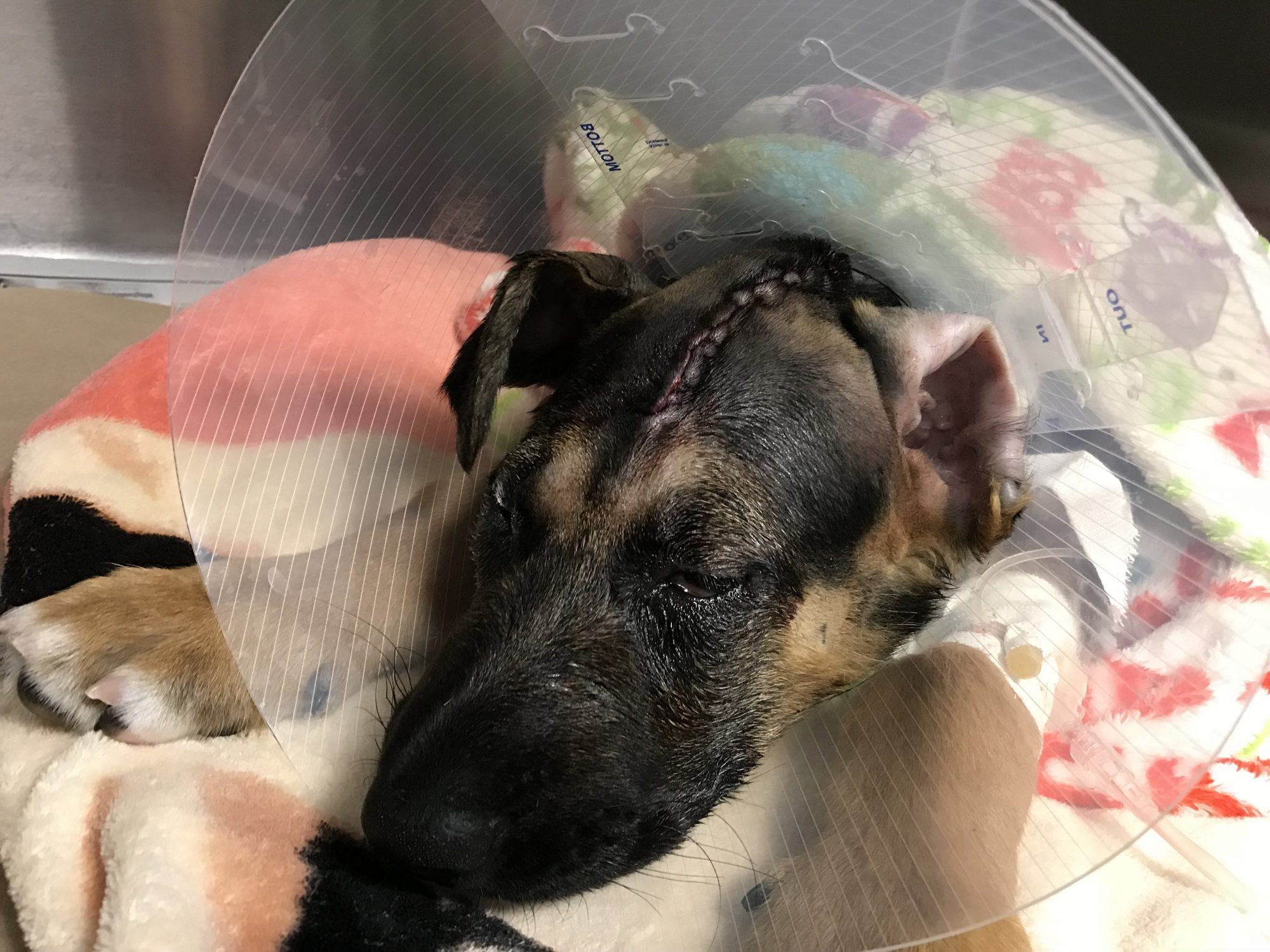
After one month, skull X-rays looked good enough that it was time to allow Major to progressively increase his activity (see the before and after X-rays below).

Before Surgery
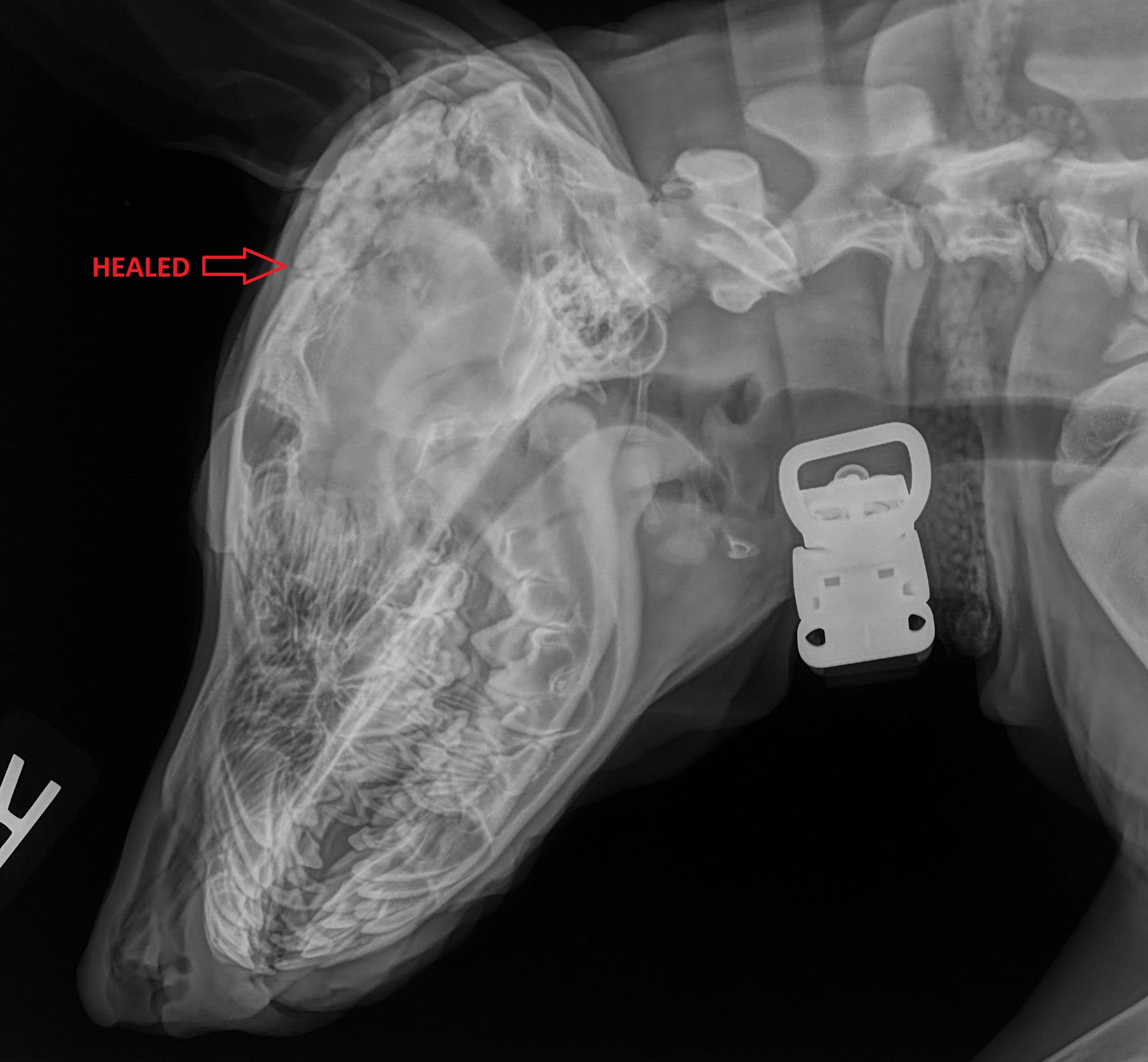
After Surgery
The end result is shown in this video shared by Major’s owner: https://www.youtube.com/watch?v=l5B8AUyW5JE
The video is only 24 seconds, but it’s guaranteed to put a smile on your face!
Major’s owner final report was:
“Major is doing great. His vision is so so. I think he is totally blind in his right eye. His left eye is not 100 percent but he manages to get around great.
Our back yard is fenced in, so he loves being outside playing with his best friend, our cat.
I’m hoping to start him back in obedience school next.
Thank you for saving our puppy.”
Phil Zeltzman, DVM, DACVS, CVJ, Fear Free Certified

Dr. Phil Zeltzman is a traveling veterinary surgeon in Pennsylvania & New Jersey. An award-winning author, he loves to share his adventures in practice along with information about vet medicine and surgery that can really help your pets. Dr. Zeltzman specializes in orthopedic, neurologic, cancer, and soft tissue surgeries for dogs, cats, and small exotics. By working with local family vets, he offers the best surgical care, safest anesthesia, and utmost pain management to all his patients. Sign up to get an email when he updates his blog, and follow him on Facebook, too!

